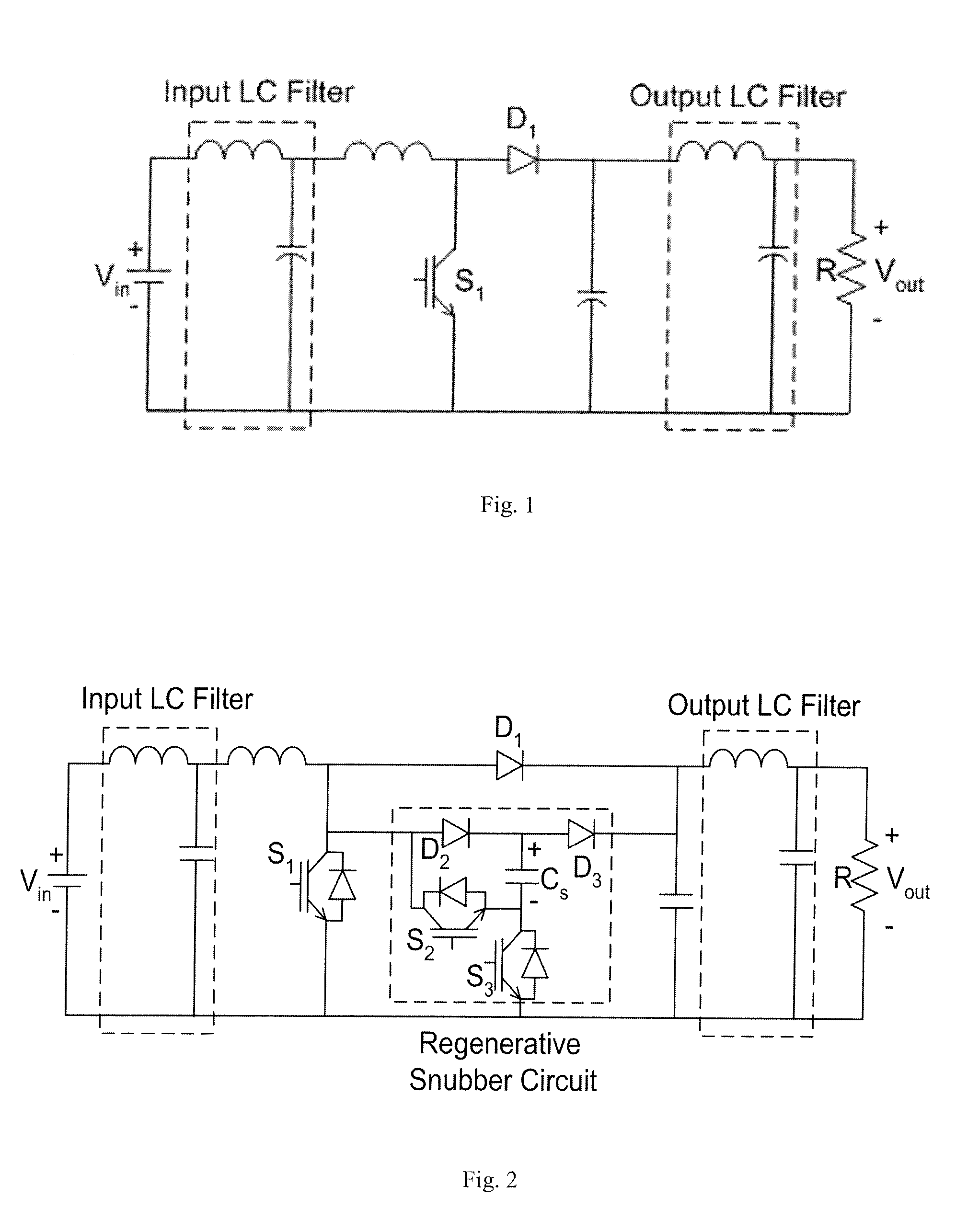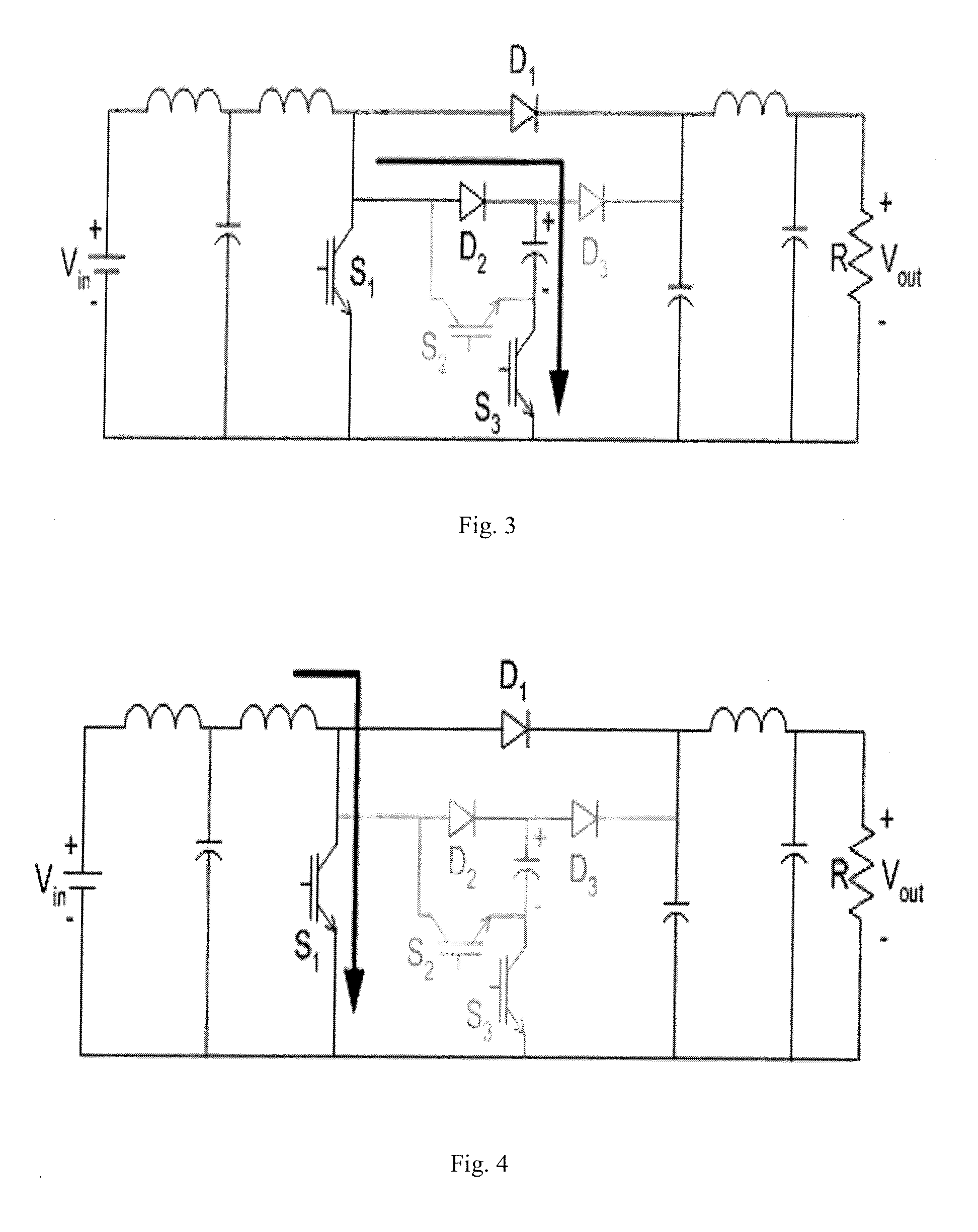Capacitor-switched lossless snubber
a snubber and capacitor technology, applied in the direction of power electronics conversion, power conversion system, electrical apparatus, etc., can solve the problems of increasing the cost of the vehicle, reducing the efficiency of the vehicle, and the fuel economy of the vehicle, so as to achieve desirable converter efficiency, reduce the stress of the switch, and high switching frequency
- Summary
- Abstract
- Description
- Claims
- Application Information
AI Technical Summary
Benefits of technology
Problems solved by technology
Method used
Image
Examples
Embodiment Construction
[0035] An analysis is performed on a high-power hard-switched boost converter in order to compare the turn-on and turn-off losses of the switch. A boost converter with specifications similar to what is used in fuel cell or electric vehicles (200V input, 400V output, 60 kW) was simulated in PSPICE. The part number for the IGBT model used is CM400HA-12E. In order to obtain practical results, the gate resistance is chosen to limit the maximum gate current to 10% of the rated current of the switch. The simulation results show that the energy loss at turn-on is approximately 2 mJ, whereas the energy loss at turn-off is approximately 21 mJ.
[0036] The much higher value of turn-off losses in an IGBT can be explained by the fact that there is a significant current tail as the voltage across the switch rises rapidly during turn-off. Hence, the capacitor-switched regenerative snubber circuit described herein focuses on reducing the turn-off losses of the IGBT. However, the des...
PUM
 Login to View More
Login to View More Abstract
Description
Claims
Application Information
 Login to View More
Login to View More - R&D
- Intellectual Property
- Life Sciences
- Materials
- Tech Scout
- Unparalleled Data Quality
- Higher Quality Content
- 60% Fewer Hallucinations
Browse by: Latest US Patents, China's latest patents, Technical Efficacy Thesaurus, Application Domain, Technology Topic, Popular Technical Reports.
© 2025 PatSnap. All rights reserved.Legal|Privacy policy|Modern Slavery Act Transparency Statement|Sitemap|About US| Contact US: help@patsnap.com



